THE HIDDEN JEWELS OF No. 952 PUTNAM (1924)
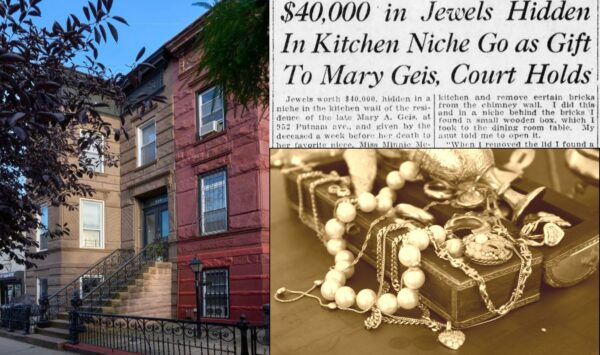
******************************************************************************************************************************** Brownstone Detectives investigates the history of our clients’ homes. The story you are about to read was composed from research conducted in the course of one of those investigations. Do you know the history of YOUR house? ******************************************************************************************************************************** In 1922, $40K in gems hidden behind some bricks in a chimney, were almost lost to the ages when their owner was about to pass away. A week before she passed, though, she directed her favorite neice to the secret location of the hidden jewels. A word to the wise when attempting to renovate your newly purchased old brownstone: “People used to hide valuables in their homes. So, look around the old joint before you invite a builder to start demolition!” (From the Brooklyn Daily Eagle, Mon., 28 January 1924.) Jewels worth $40,000, hidden in a niche in the kitchen wall of the residence of the late Mary A. Geis, at 952 Putnam avenue, and given by the deceased a week before her death to her favorite niece, Miss Minnie McDonald of 582 Woodword avenue, Queens, may be retained by the latter, despite efforts made to recover them by Joseph Geis, an executor of the will. Surrogate Wingate has handed down a decision in favor of Miss McDonald, the respondent. A week before her aunt died, according to the dramatic story told on the stand by Miss McDonald, she sent for her and told her that she was dying. “She directed me to go into the kitchen and remove certain bricks […]
THE “HOODOO” BURGLAR OF BEDFORD (1904)
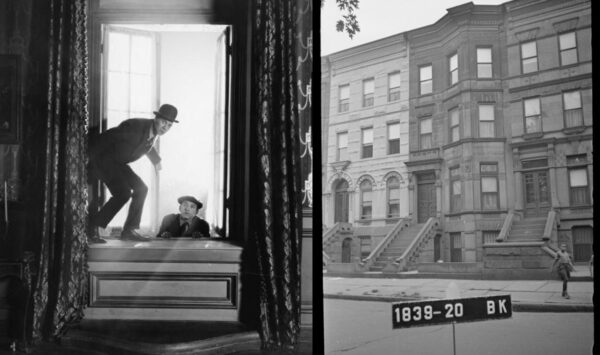
******************************************************************************************************************************** Brownstone Detectives investigates the history of our clients’ homes. The story you are about to read was composed from research conducted in the course of one of those investigations. Do you know the history of YOUR house? ******************************************************************************************************************************** “In the arrest of Roy Hyden, a 25-year old Austrian, early this morning, Brooklyn’s most active burglar was run to earth and a heavy load lifted from the police mind. “Henry F. O’Connell, a special officer, who is employed by the residents in the neighborhood of Jefferson and Marcy avenues to watch their homes at night, caught the man shortly after 3 o’clock this morning, “with the goods on him.” O’Connell espied Hyden coming down the stoop of the home of Mrs. Maria C. de Porozo, at 254 Jefferson avenue, staggering under a weight, with his pockets bulging; the bay parlor window was wide open. Before Hyden reached the bottom of the stoop he was in the firm grasp of O’Connell. The latter lost no time in calling a patrol wagon and the prisoner was hustled to the Gates avenue police station. There he was joyfully received by Detective McGann, who relieved him of his burden. “No less than sixty-four pieces of silver, including knives, forks, spoons and other small diningroom articles, weore fished out of his commodius pockets. But what pleased the police more than all “the silverware, was a steel case-opener and an electric flashlamp, which were carefully stowed away in the lining of the prisoner’s overcoat. Hyden gave […]
WOMAN ON A LEDGE AT No. 97 MACON ST (1953)
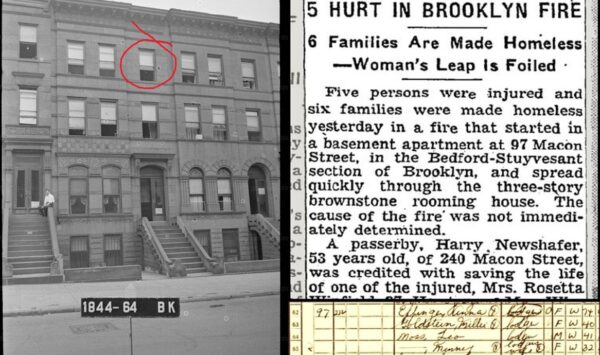
******************************************************************************************************************************** Brownstone Detectives investigates the history of our clients’ homes. The story you are about to read was composed from research conducted in the course of one of those investigations. Do you know the history of YOUR house? ******************************************************************************************************************************** All houses have a history. Those of a certain age clearly have it in spades. One part of any house’s history are those incidents that occur without planning or preordination. They can be unpleasant to know. One of those unplanned incidents, is the housefire of unknown origin that spreads uncontrollably through a residence. One such fire which spread throughout a building, took place on a cold January day in 1953 in a rooming house on Bedford-Stuyvesant’s No. 97 Macon Street. FROM A SINGLE-FAMILY TO A ROOMING HOUSE By 1953, Bedford-Stuyvesant’s brownstone stock was ageing – and it was not doing so gracefully. A large percentage of this section of Brooklyn’s brownstones had passed their semicentennial and were still wired and plumbed as they had been when they were constructed. While many of them had been maintained through the first 30-40 years, as earlier owners moved out and were acquired by owners who began to rent out rooms, however, these newer owners put little money into their maintenance, preferring to squeeze as much profit as possible out of their rent rolls. The Depression-era programs of redlining and blockbusting brought many unsavory characters into the business of making money through the purchase and management of brownstones in black-majority sections – as well as […]
THE PLAN TO SEGREGATE BED-STUY (1937)
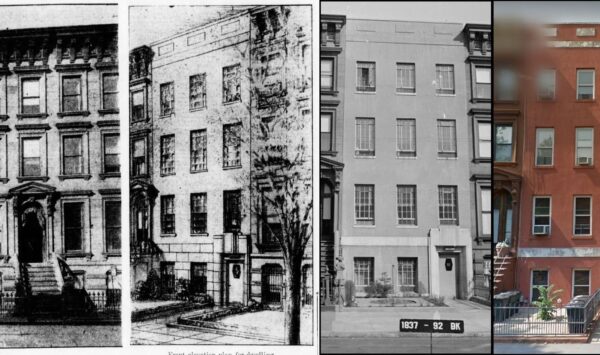
******************************************************************************************************************************** Brownstone Detectives investigates the history of our clients’ homes. The story you are about to read was composed from research conducted in the course of one of those investigations. Do you know the history of YOUR house? ******************************************************************************************************************************** In 1937, much of Brooklyn’s brownstone stock was reaching its limits. Its townhouses were, on average, approximately 50 years old and, in the eyes of many residents and brokers, outmoded of interior and unattractive of exterior. In fact, residents of certain sections of Brooklyn were beginning to move out of the older sections with the ancient brownstones, in favor of the newly constructed apartment buildings – or simply to other outlying sections of the borough. There were those residents, however, who felt that they saw a bigger problem, an over-arching trend that, unchecked, had the potential to destroy investment, send house values spiraling downward, and force them to move out of a community where they – and their families – had lived for generations. For these residents, the problem fell less into the category of an ageing housing stock than into that of the lot of outsiders – those of a different economic class, certainly those of a different race – who were already beginning to move into them. The problem of the outdated housing stock, while real, was not the sole impetus to modernize. Rather, that incentive came from a fear of an undesirable population that must, at all costs, be kept at bay. It was, thus, that a move […]
HOW TO MOVE A ROW OF BROWNSTONES (1905)
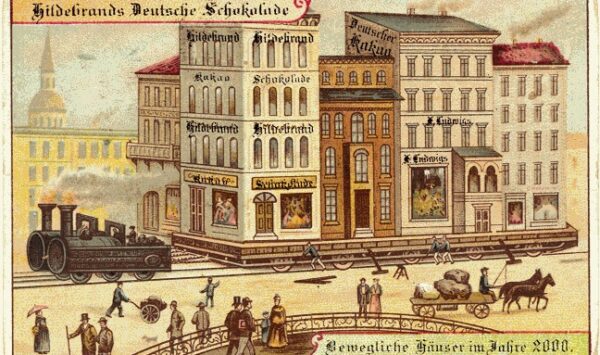
******************************************************************************************************************************** Brownstone Detectives investigates the history of our clients’ homes. The story you are about to read was composed from research conducted in the course of one of those investigations. Do you know the history of YOUR house? ******************************************************************************************************************************** It was called “one of the most unusual examples of housemoving” ever. Up until 1905, no one had ever attempted it. And it was moving two rows of five Brooklyn brownstone houses together, as a row each, one, across the street, and one across a block AND a street. Contractors, experienced in the business, had – to this point – only moved much lighter frame houses, even rows of frame house. But a row of brownstone houses? Impossible! Over a course of several weeks, though, two rows of brownstone houses were jacked up, stabilized – and then rolled away. These same brownstone houses now sit across the street on Jefferson Avenue – as though they had always been there. MAKING WAY FOR THE EXTENSION It all started in the Bedford-Stuyvesant section of Brooklyn, when the State of New York decided it needed more room for an extension to an armory it owned on Sumner Avenue. The armory, bound by Sumner Avenue on the west, Putnam Avenue on the north, and Jefferson avenue on the south, could only expand in one way – into two rows of brownstones. Behind the armory, on Putnam Avenue, sat a row of brownstones from the 1880s, while, on Jefferson Avenue, a more recent vintage of brownstones […]
TO CATCH A MACDOUGAL STREET THIEF (1910)
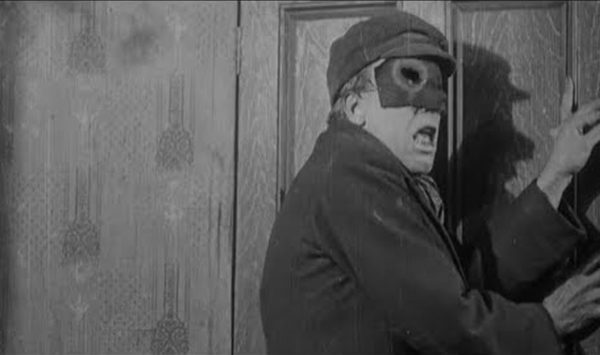
******************************************************************************************************************************** Brownstone Detectives investigates the history of our clients’ homes. The story you are about to read was composed from research conducted in the course of one of those investigations. ******************************************************************************************************************************** When investigating the history of a house, we sometimes come across a jewel that details an event which took place within the structure. The following narrative from 1910 tells a story involving the homeowner of No. 274 MacDougal Street, a rowhouse in the Ocean Hill section of Bedford-Stuyvesant, who happened upon a would-be burglar entering his home through an open window late one night. The homeowner, Charles Ortman, an engineer, had recently moved to the newly-built structure with his small family. Ortman showed a presence of mind not typical of someone faced with an intruder attempting to gain access to his home. Using old newspaper stories, city insurance maps, and census records, we reconstruct the case. Brooklyn Daily Eagle, 5 November 1910 – “Charles Ortman, an engineer last night shot a burglar who was in the act of breaking into his home at 274 McDougal street. The shooting was witnessed by his 12-year-old son, Charles, and by his wife, who had followed him out to the dining room, where the thief’s face had appeared pressed close to the window pane. “Whether the would be intruder was slightly or fatally wounded the police do not know. He had disappeared when a policeman of the Ralph avenue station arrived, in response to a summons from the Ortman home. But there was […]
THE BOY AUTHOR OF 224 MONROE ST (1914)
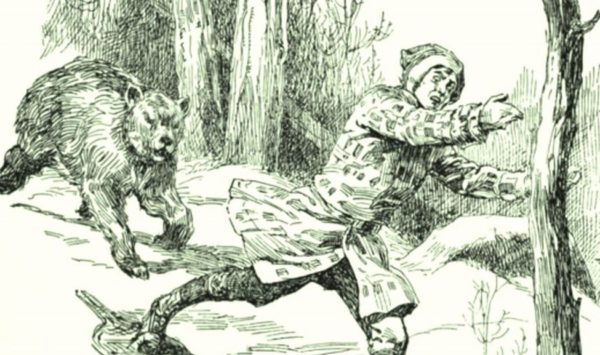
******************************************************************************************************************************** Brownstone Detectives investigates the history of our clients’ homes. The story you are about to read was composed from research conducted in the course of one of those investigations. Do you know the history of YOUR house? ******************************************************************************************************************************** In 1914, Gilbert P. Simons was being lauded for his first book. Simons, however, was no typical writer – he was a 13-year-old Brooklyn boy who had just written and published his very own book. “Shadorok Tales,” Simons’ work, was a foundational “collection of stories by him and his cousins and friends, none of whom is a great deal older than he.” WRITING THE BOOK ON MONROE STREET The entire affair began when Simons, who “in the winter lived at 224 Monroe street (near the corner of Nostrand Avenue), and in the summer at Blauvelt, N.Y.,” was given “a printing press and type by his father on Christmas of 1912,” noted the Brooklyn Daily Eagle. Little Simons appears to have had a leg up in his young publishing career by a father who worked for the Daily Eagle, which was Brooklyn’s newspaper of record. Simons started at first printing invitations, cards, circulars, billheads, &c., but then “the big idea of the book took hold of Gilbert and his father. “Everyone who was asked to contribute did so,” noted the Daily Eagle of the compilation volume of stories, “and soon there was enough ‘copy’ on hand to begin ‘setting it up.’” In 1915, the book was finished and printed up by the Shadorok […]
THE CRUMBLING OF MACON & MALCOLM
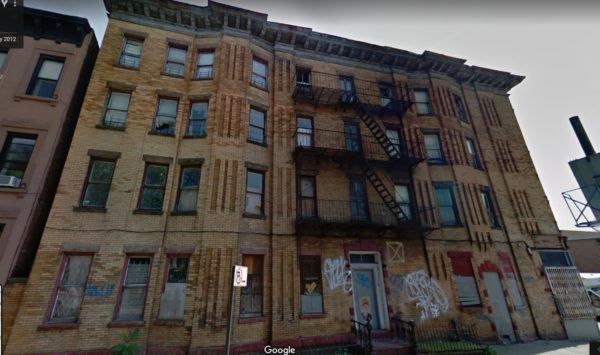
******************************************************************************************************************************** Brownstone Detectives investigates the history of our clients’ homes. The story you are about to read was composed from research conducted in the course of one of those investigations. Do you know the history of YOUR house? ******************************************************************************************************************************** (This post has been updated as of 8 February 2021.) The apartment building at the corner of Malcolm X Boulevard and Macon Street, No. 265 Malcolm X Blvd/546 Macon Street, which was constructed ca. the 1890s, has experienced an increased deterioration in the past 20 years. Although we don’t have a current snapshot of the building, the Department of Buildings notes that there is a sidewalk shed there, the existence of which was likely due to a failure to maintain building (i.e., falling glass, mortar, cornice, &c.). The building is currently owned by the Mission Field Church. The property has 12 complaints and 33 open violations. See in pictures how the structure has deteriorated over just the past ten years. Follow @BrownstoneDetec Share ———————————————————————————————————————– The Brownstone Detectives Brownstone Detectives is an historic property research agency. Our mission is to document and save the histories of our clients’ homes. From our research, we produce our celebrated House History Books and House History Reports. Contact us today to begin discovering the history of your home.